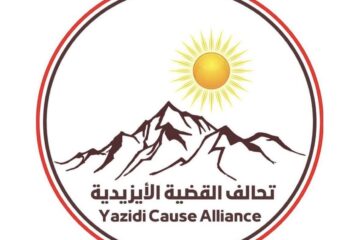Ezidi Design on Kurdish Catwalk: Respect or Cultural Appropriation?
Does a Kurdish runway honor Ezidi heritage—or risk erasing it?
Recently, Instagram feeds were filled with videos from the exhibition of a Kurdish fashion designer’s show in Milan. The overall theme was to present designs inspired by “Kurdish” tradition and culture. Piece no. 7, however, was a traditional Ezidi female attire, worn especially by Ezidi women in Iraq.
To begin with, on a personal note and in an ideal world, Ezidi Times would interpret this action as an innocent and friendly gesture by the designer. It could be seen as something done between two friendly nations. For instance, if a German fashion designer included pieces representing Dutch, French, and Italian traditional clothing, it would be viewed as respectful and amicable. However, if an Arab fashion designer were to include Assyrian traditional clothes in a collection labeled “Arab traditional clothes,” it would carry a more imperialistic and appropriative meaning. Similarly, imagine if an Azerbaijani designer used Armenian and Iranian traditional clothes under the label “Azerbaijani traditional-inspired fashion.” Would Armenians and Iranians happily applaud and feel “seen”?
Looking at the comments online, many seem to feel acknowledged and thankful for being “included” in the collection. But the question these people should ask themselves is: Why can you not make your culture visible on your own? Why do you need a Kurd to present your traditional attire? Why are Ezidis in the Middle East not seen and not included when cultures, religions, and ethnicities are showcased in the region? The answer is clear: you have been censored, hidden, and silenced by both Iraqi and Kurdish powers. The Arabs aim to promote a unified Arab identity in Iraq, while the Kurds attempt to steal (yes, steal) the identities of minorities in the region to counter this with a manufactured Kurdish identity.
Why, then, were only Ezidis invited who have close ties to Kurdish politics, such as Düzen Tekkal and Wahhab Hasso? Why were Nadia Murad, Pari Ibrahim, Natia Navrouzov, Khdr Hajoyan, Rustam Bakoyan, and other prominent Ezidis not invited? In other words, why were only those Ezidis present who have repeatedly downplayed their Ezidi identity to serve the artificial Kurdish narrative—those who have, in fact, harmed the Ezidi people?
Ezidis, you too have the ability to become fashion designers, influencers, singers, actors, artists, and photographers, and to present our rich Ezidi culture. You do not need a Kurd, Arab, or Turk to showcase your identity under the disguise of their culture.
As an ancient people with old traditions and, hopefully, with equally deep wisdom, we at Ezidi Times urge you to look more critically at this issue and understand the dangers such actions pose for our people. How long will you make yourselves smaller and subordinate? How long will you give away your traditions and identity to peoples who are themselves lost and searching for roots and history? And let no one dismiss these concerns as “aggressive” or “hateful”: it is neither aggressive nor hateful to want to protect one’s cultural heritage and be left in peace.
Ezidis, wake up! Is this what our ancestors fought for over thousands of years? Will you betray their struggle and memory by submitting to conquerors?


0 Comments